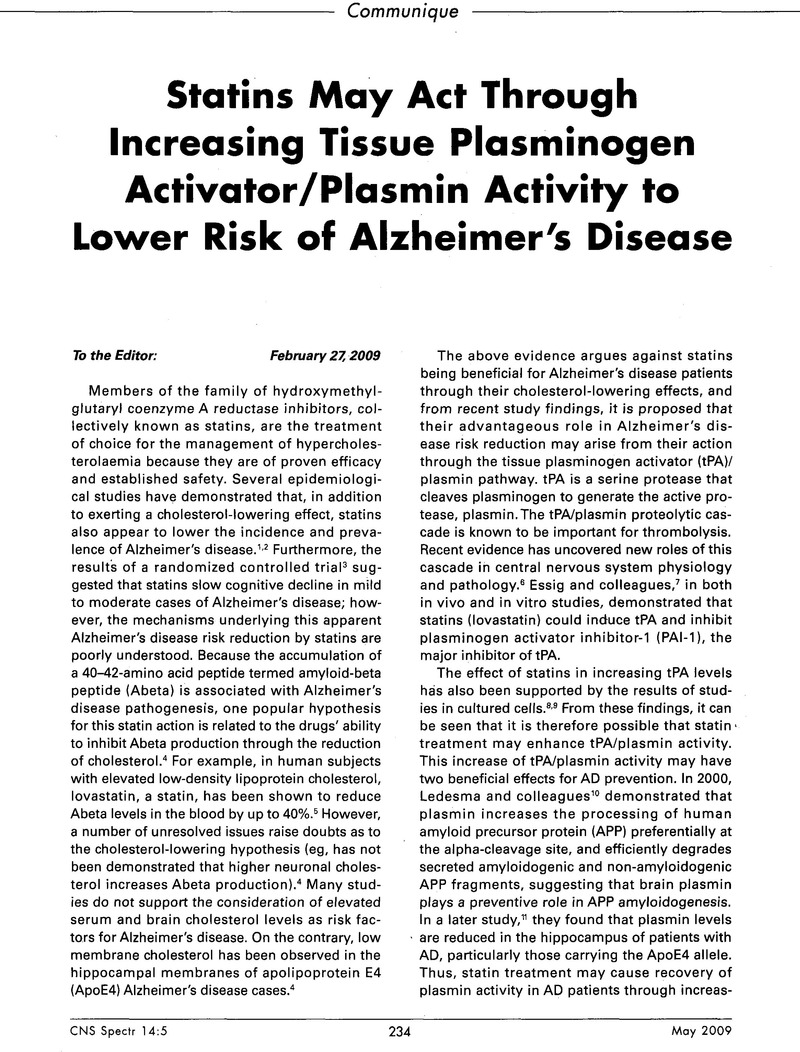Crossref Citations
This article has been cited by the following publications. This list is generated based on data provided by Crossref.
Barker, Rachel
Love, Seth
and
Kehoe, Patrick G.
2010.
Plasminogen and plasmin in Alzheimer's disease.
Brain Research,
Vol. 1355,
Issue. ,
p.
7.
Yanev, Stanislav
2013.
Neurotrophic and metabotrophic potential of nerve growth factor and brain-derived neurotrophic factor: Linking cardiometabolic and neuropsychiatric diseases.
World Journal of Pharmacology,
Vol. 2,
Issue. 4,
p.
92.
Ran, Mingzi
Li, Zhaoju
Yang, Lujia
Tong, Li
Zhang, Lina
and
Dong, Hailong
2015.
Calorie restriction attenuates cerebral ischemic injury via increasing SIRT1 synthesis in the rat.
Brain Research,
Vol. 1610,
Issue. ,
p.
61.



